Search results
Is Ancestry.com for Sale?
June 6, 2012 by ramona
Filed under Articles, Latest News
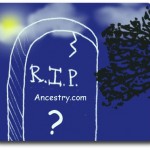 A report June 6, 2012 at Investors.com states genealogy service Ancestry.com is contemplating a sale of the company.
A report June 6, 2012 at Investors.com states genealogy service Ancestry.com is contemplating a sale of the company.
A leader in genealogy services since 1983 Ancestry.com is the biggest online family history service with several websites that aid people in tracing their family trees.
The genealogy giant totals 1.87 million paying subscribers and offers well over seven billion searchable records. On the inside, the company employs 1,100 people and reports June 5, 2012 from the Deseret News state that along with their recent purchase of Archives.com in April 2012 for $100 million, there are also plans to hire 50 to 70 new tech personnel.
The company based in Provo, Utah has seen an overall slow down in subscriber growth and in response is said to have hired Frank Quattrone’s San Francisco based company, Qatalyst Partners to source buyers.
Taken as a whole Ancestry.com finished the first quarter of 2012 with:
Despite this, last month’s cancellation of Who Do You Think You Are, a major promotional vehicle for the company, hit them hard when stocks dropped 13.7% after NBC announced the shows cancellation.
Genealogy Death Records: Cause of Death
May 25, 2012 by ramona
Filed under Articles, Genealogy Death records, Genealogy Records 101, Latest News
 Records of our ancestor’s deaths can reveal vital clues that help with tracing the family tree. Genealogists have long recognized the importance of the information held in these records such as names, dates and places.
Records of our ancestor’s deaths can reveal vital clues that help with tracing the family tree. Genealogists have long recognized the importance of the information held in these records such as names, dates and places.
However quite often, family historians want more than the dry facts. We want to get to know our ancestors through the paper trails they have left behind. Even more importantly, we sometimes want to learn more about a family history of disease.
Causes of Death in Your Family Tree
While obtaining these records has become easier over the years, understanding the cause of death is often a conundrum. Whether they are natural or accidental, causes of death can be extremely perplexing.
Even when they seem straight forward, like in the case of P. Sinclair whose death record stated lost at sea. After a good deal of research went into determining where he was lost at sea it was discovered that the term was often applied to sailors who had celebrated a little too heavily while on leave and drowned from drunkenly falling off the dock.
Making things more difficult are archaic medical terms that seem quite bizarre to our 21st century minds. It is hard to know what is meant when the cause of death cited is poisoned face.
Not all causes of death on old records are as extreme as the example above however they can still be a challenge. Here is a look at some common and not so common terms you are likely to run across in your research.

The causes of death found in ancestral records are as diverse and numerous…well, as our ancestors.
If you are interested in tracking this fascinating subject in order to research and document possible hereditary diseases, Genealogy Beginner recommends using our Major Milestones Tracking Form. Download yours today with your 30 Day FREE Trial.
Family Heirlooms: Preserving the Past
May 20, 2012 by ramona
Filed under Articles, Family History, Latest News, Preserving Your Family Tree
 Those interested in climbing their family tree often have a passion for the stories and keepsakes passed from generation to generation.
Those interested in climbing their family tree often have a passion for the stories and keepsakes passed from generation to generation.
It is not surprising that they frequently find themselves the guardians of traditions, stories and irreplaceable family heirlooms. Family heirlooms come in many forms, from jewelry to old diaries to 100-year-old garments like christening gowns.
Being the keeper of the family treasures is a big responsibility and rarely taken lightly. While some heirlooms are easily cared for, others such as very delicate old textiles like quilts, needlework pieces, dolls and garments require very careful handling.
Old Textile Do’s and Don’ts
Caretakers with the best of intentions sometimes damage old textiles through lack of knowledge. The following list will help family historians in following the first rule of caring for your family’s textile keepsakes…do no harm.
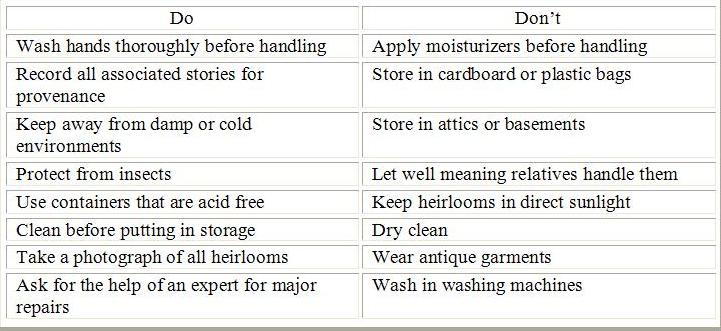
Cleaning Old Textiles
Old textiles are often weakened through time. When cleaning never wring, scrunch or hang them as they may tear easily. Always lay them out flat to dry and wrap them in acid free tissue paper or a clean white cotton sheet before storing. It is very important that heirloom textiles are always stored flat and never crushed.
Wool
Before you clean any antique woolen garment, it is a good idea to test it for color fastness. To do this simply apply a little water then squeeze it in between some paper towel. If the color bleeds, you will need to give it a vinegar treatment to stabilize the dye. To do this, soak the garment in a mixture containing one gallon of water to one tablespoon of white vinegar for five to ten minutes. To dry the garment place it between a couple of thick absorbent bath towels, press out excess moisture and lay flat to dry.
Cotton
Cottons have a tendency to yellow with age and shrink if not dried properly. Before attempting to wash any cotton garment or textile, try cleaning with a soft brush and a low suction vacuum. When cleaning cotton garments it is best to treat stained areas with hydrogen peroxide rather than to attempt cleaning the entire garment. Before attempting, any major restorations consult a professional.
If you’re the guardian of your families textile treasures Genealogy Beginner recommends reading “The Textile Conservator’s Manual”, by Sheila Landi available from Amazon.com.
Family Heirlooms: 19th Century Photographs
May 13, 2012 by ramona
Filed under Articles, Family History, Latest News, Preserving Your Family Tree
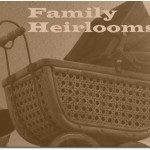 Often making a journey across time and continents, family heirlooms are a solid physical connection to a very personal ancestral past that tend to hold memories, which resonate deep within us.
Often making a journey across time and continents, family heirlooms are a solid physical connection to a very personal ancestral past that tend to hold memories, which resonate deep within us.
Those who have held their great-grandmothers wedding dress or read the letters written home from a relative who served in a war understands the deep link felt across the generations. One truth shared by all family treasures is that… it is the stories that accompany them that give them the greatest meaning and tie us to our generations past.
Sadly, sometimes the objects remain while the stories are lost. Genealogically this can be a great opportunity to discover a new family history story or ancestor. If you have, an heirloom that has become a bit of a mystery an investigation may be in order. The type of investigation you conduct will likely depend on the object you are investigating. While family heirlooms are made up of every object imaginable, from jewelry to family bibles. Often the photographs pose the most problems…particularly very early ones.
19th Century Photographs
The first step in solving the puzzle of a mysterious early period photograph is deciding what type of photo you have. A difficult task with these three photo types of the 19th century.
Daguerreotype:
A good way to decide if it is a Daguerreotype is to hold a piece of paper over the surface and see if the image is reflected in reverse. Additionally, Daguerreotypes are often tarnished around the edges of the picture. If it is a Daguerreotype is will date from 1839-1860.
Ambrotype:
Ambrotypes are often hand tinted. To figure out if what you have is an Ambrotype carefully remove it from the case and hold it up to the light. Ambrotypes were printed on glass so you should be able to see through it. Another clue is to look for any cracks or peeling as another hallmark of the Ambrotype is the black paint used to process the picture. Ambrotypes date from 1854-1865.
Tintype:
It can be hard to tell the difference between a Tintype and an Ambrotype. The only way to be certain is to hold a magnet near it. Tintypes were made of a very thin iron and should be attracted to the magnet. Tintypes were common during the civil war and date from 1856-1920.After you have determined the type of photograph, you may need to track down its geography. A hint you may find helpful, is through the clothing worn by the people in your photograph. Clothing, accessories and hairstyles may be great hints for women, while uniforms can be a dead give away for men. All can help you to zero in on the country or origin. Once that is determined, the next step is to search for period photographers from that country. Several indexes by country list photographers so you should not have too much trouble once you know the photo type.
Additionally, some early photographers may have developed an identifiable style that can be helpful in tracking them down. For example, there may be preferences in the manner which subjects are posed (seated or standing), or backgrounds and props used may offer some clues. This process can be very time consuming, as it is a matter of searching and comparing your photo to the ones found in your search. Even at that, be cautious about your conclusions.
Solving the mystery of your family heirloom can be fun and rewarding. Better yet, it may help flesh out your family history, add new branches to your family tree and fill out another space on your family template. All good reasons to start your detective work A.S.A.P.
If you have a mystery, post it in the Ask A Genealogist forum, or share with us how you solved a mystery on the Discovery Panel and tell us how you did it. Genealogy Beginner would love to hear about your family treasures and heirloom stories.
Why Learn Genealogy?
April 27, 2012 by ramona
Filed under Articles, Getting Started in Genealogy, Introduction to Genealogy, Latest News
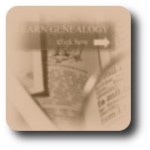 Have you ever wondered why genealogy and family history research is so popular? What is it that drives people to spend so much of their money and time pursuing their ancestral past?
Have you ever wondered why genealogy and family history research is so popular? What is it that drives people to spend so much of their money and time pursuing their ancestral past?
On a personal level it may start with a question of self-identity “Who am I?” or a need to know where we belong “Where do I come from?”
In 1964 psychologist H. J. Sants, coined the term “Genealogical Bewilderment” in describing identity issues in adoptees, Sants theory declared that adopted children experienced a greater degree of stress than children raised by their genetic parents due to an absence of knowledge of their origins.
In 1952 a letter was written to the Journal of Mental Health by psychiatrist E. Wellisch, titled “Children without genealogy: The problem of adoption” in which he said:
“Knowledge of and definite relationship to his genealogy is … necessary for a child to build up his complete body image and world picture. It is an inalienable and entitled right of every person. There is an urge, a call, in everybody to follow and fulfill the tradition of his family, race, nation, and the religious community into which he was born. The loss of this tradition is a deprivation which may result in the stunting of emotional development.”
While not everyone who engages in genealogy as a hobby is suffering from an identity crisis, there is still an echo of truth in these words.
Perhaps we feel a little disengaged from the far off shores of our homelands or maybe the answer lies in the theory of ancestral memory as expressed by Carl Jung’s “collective unconscious”, Freud’s “archaic remnants” or the more modern idea of “genetic memory”. All theories which at their heart suggest that within each individual is a body of knowledge or a memory passed down through our ancestors.
Speculation and pseudoscience aside there is no doubt that genealogy has become a popular hobby. The most current report on market trends for genealogy by Global Industry Analysts, Inc. (statistics as of January 11, 2012) show that between US$1000 to US$18000 is spent per year on genealogy research by over 84 million genealogists.
Ultimately, the why of genealogy research can only be answered by the individual pursuing it and perhaps it is best left at that. However, one thing all of us addicted to climbing our family trees can agree on is that it is one of the most rewarding hobbies around.
If you are ready to begin learning about your family tree start here at Genealogy Beginner.
Genealogy Scams and Red Flags
April 22, 2012 by ramona
Filed under Articles, Getting Started in Genealogy, Introduction to Genealogy, Latest News
 With the growing popularity of genealogy and family history, it is easy to find hundreds of internet sites dedicated to the subject; from sites claiming to have huge databases to others that promise to contain information relevant and specific to your family tree, surname or coat of arms.
With the growing popularity of genealogy and family history, it is easy to find hundreds of internet sites dedicated to the subject; from sites claiming to have huge databases to others that promise to contain information relevant and specific to your family tree, surname or coat of arms.
Beginning Genealogists should be aware that not every genealogy site is as good as the claims they make.
Genealogy Scams
While a great deal of family tree sites are trustworthy, newcomers to genealogy can sometimes fall prey to less reputable sites that exist to take your money and offer you zero results or results you could have found for free. Additionally family tree research novices should beware of “genealogy sites” that exist for the sole intention of gathering your personal information for the purpose of email marketing or worse…identity theft.
Before you enter your details for any family tree site, research the site to see what they are claiming to offer.
A reputable genealogy site will:
- List exactly the information, records and databases you can access once you have signed up
- State the locations and periods for which records are available
- State the source of the records or information they hold
Top Three Genealogy Site Red Flags:
#1. A site that makes generalized claims such as “Largest Genealogy Database”, “Millions of Names Free”, “Your Family Story” or simpler claims to “marriage or birth records” without any detail provided…should be avoided.
#2. Your “Free Search” results are ambiguous. For example, a search return that says they have found X-number of results on the name you entered without details. A good test of this kind of result is to type in a nonsense name such as Harry I. Balls or Jemima Pancakes to see how many results you get.
#3. A site that only provides an online contact form and does not list contact information such as a telephone number or address is not a good bet. A site without customer service is an absolute no go.
Although there are no 100%, fail-safes as these sites tend to come and go rather quickly. Following the above mentioned simple precautions may help you spot Red flags and make adding those names to your family template a safe and enjoyable experience.
A Graphic Family in History
April 16, 2012 by ramona
Filed under Articles, Family History, Latest News, Preserving Your Family Tree
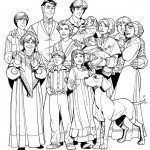 Family History books come in all shapes and sizes however I am not sure many genealogists ever expected to see one in the form of a graphic novel. The Loxleys and the War of 1812 is a book that records a monumental chapter in Canadian history through the premise of a family history.
Family History books come in all shapes and sizes however I am not sure many genealogists ever expected to see one in the form of a graphic novel. The Loxleys and the War of 1812 is a book that records a monumental chapter in Canadian history through the premise of a family history.
The idea to use a family tree to tell the story of the War of 1812 belongs to British expat, Alexander Finbow. Digging deep into letters and journals, Finbow researched families living in Upper Canada during this period in history. However, unable to settle on a single family the “Loxley’s” became a fusion of stories from several pioneering families.
The graphic novel is a factual telling of the war through the “Loxleys” a fourth generation Canadian family who are located in the Niagara Peninsula. Having left America following the American War of Independence, readers follow the family through the journals of “Aurora Loxley” who diligently records the involvement, trials and struggles of her family as they are thrust back into violence when America declares war on Britain and the Canadas.
A collaboration of artists, writers and historians The Loxleys and the War of 1812 is published by Renegade Arts Entertainment, written by Alan Grant with a summary by Canadian Military historian Mark Zuehlke, with illustrations by Claude St. Aubin and Lovern Kindzierski.
Although genealogically the story is indeed fictional, the concept of bringing a family history book to life through a graphic novel is intriguing and promises to be an enjoyable read for all interested in history and genealogy.
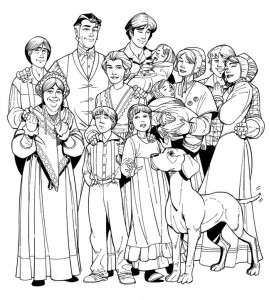
Image Courtesy of Claude St. Aubin with permission from Alexander Finbow
“Finding Your Roots” Premiers Sunday
March 21, 2012 by ramona
Filed under Articles, Latest News
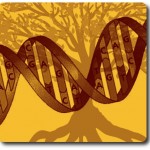
Mark your calendars for Sunday March 25 8pm EDT to watch the premier of “Finding Your Roots” with Henry Louis Gates, Jr.
Perhaps what makes “Finding Your Roots” one of the most interesting celebrity genealogy programs to date is the element of surprise as Gates escorts his guests through some shocking revelations in search of their ancestors.
Each episode features the genealogy of two or more celebrities. With the help of some leading American Genealogists, Family History experts and DNA samples. The show often links guests together in surprising ways using Autosomal DNA.
Scientists Joanna Mountain and Mike Macpherson of “23and Me” (genetics testing company) worked with “Finding Your Roots” to come up with some often-astonishing results. Proving relationships by degrees such as 3rd, 4th, 5th cousins (or more) is accomplished using the genetics company’s “Relative Finder” test.
This seasons 10 part series features a celebrity Line up of:
· Harry Connick Jr. and Branford Marsalis
· Cory Booker and John Lewis
· TV Personalities Barbera Walters and Geoffrey Canada
· Kevin Bacon and Kyra Sedgwick
· Angela Buchdahl, Rick Warren and Yasir Qadhi
· Samuel L. Jackson, Condoleezza Rice and Ruth Simmons
· Actors Maggie Gyllenhaal and Robert Downey, Jr.
· Sanjay Gupta, Margaret Cho and Martha Stewart
· John Legend, Wanda Sykes and Margarett Cooper
· Michelle Rodriguez, Adrian Grenier and Linda Chavez
Watch Preview on PBS. See more from Finding Your Roots.
Free Immigration Records: Ellis Island Site Calls for Help
March 20, 2012 by ramona
Filed under Articles, Latest News
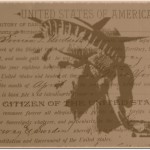
These days genealogy sites that give free access to records are few and far between. One of the few sites that do provide free use is The Ellis Island Immigration site. If you have used the Ellis Island site to find your ancestors immigration records you already know what a valuable resource it is to family tree climbers. Can you imagine what a tragedy it would be to the genealogy community if that access were lost?
This week a story in The Tribune Star by Tamie Dehler, calls out on behalf of the Statue of Liberty/Ellis Island Foundation. The foundation, responsible for making free immigration records available to genealogists and family history researchers is a non-profit organization that relies heavily on public support for continued free access to these important records.
In their message to the public, the foundation says:
“In order to continue to provide free access to our valuable archive of immigration records … we need to ask our friends to step in and play a part with a critically needed contribution. For more than 10 years, these immigration records have been free for you to explore. But our site and content are costly to maintain, operate day-to-day, and continually improve. We’re a non-profit, so your tax-deductible contribution is essential to our work. And in tough times like these, whatever donation you make goes even further than you can imagine in keeping Ellis Island Online free.”
Your support in the form of a yearly membership will help The Statue of Liberty-
Ellis Island Foundation, Inc. keep this invaluable service open to genealogists. Membership costs total $45.00 per year and are 100% tax deductible.
Visit The Statue of Liberty-Ellis Island Foundation, Inc and support the foundation that has helped so many.
Image Credit: Ramona Hartley
Genealogy News: Accessible Archives
February 29, 2012 by ramona
Filed under Articles, Latest News
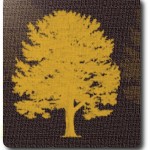 Accessible Archives has been a well-kept secret for far too long. The company founded in 1990 has made an impressive amount of archived information (at one time only offered through microfilm) available through computer technology.
Accessible Archives has been a well-kept secret for far too long. The company founded in 1990 has made an impressive amount of archived information (at one time only offered through microfilm) available through computer technology.
Accessible Archives has excellent search capacity that allows family history buffs to pinpoint very specific information that is then presented in digital format or through direct link.
Collections for Family History
This invaluable resource for genealogists contains mainly “PRIMARY SOURCE” materials! Filled with mostly US based content, Accessible Archives has a huge collection of newspapers and books from the 1700’s to 1800’s.
Some of the items in their collection that have the greatest genealogical value include:
- African American Newspapers
- Frederick Douglass’ Paper
- Freedom’s Journal
- Provincial Freeman (Canadian Publication)
- American County Histories to 1900
- Delaware and Maryland County Histories
Maine County Histories
New York County Histories
Vermont County Histories
- Delaware and Maryland County Histories
- The Civil War Collection
- Part I: A Newspaper Perspective
- Part II: The Soldiers’ Perspective
- Part III: The Generals’ Perspective
- Part IV: A Midwestern Perspective
- Part V: Iowa’s Perspective
- Part VI: Northeast Regimental Histories
Access for Genealogists
Access is available on a two-tier platform that includes institutions and individuals. For individual access, there is a yearly membership fee of $59.95 payable via internet by credit card, debit card or PayPal. However, before you sign up for Accessible Archives check with you local library, college or university as they may already have a membership.
In addition to Accessible Archives, amazing collection, the site hosts a news section, webinars and a blog filled with shared resources. Overall Genealogy Beginner gives Accessible Archives a very high rating as one of the best internet resources for family tree enthusiasts as well as historians.
Image Credit: Ramona Hartley
